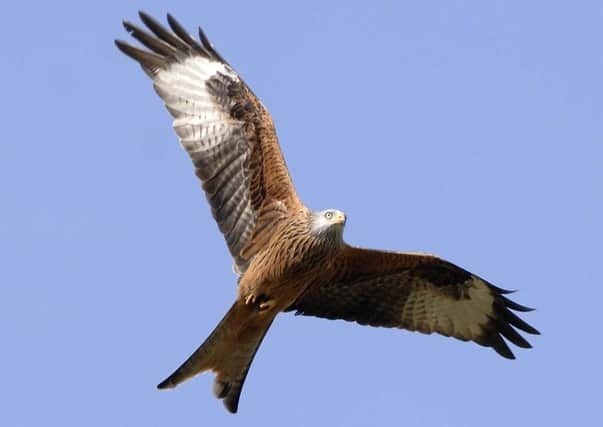Red kite populations taking off slowly in the north due to killings


The study, carried out by RSPB’s Centre for Conservation Science for Scottish Natural Heritage, shows the number of birds colonising the north of Scotland is much lower than at comparable release sites elsewhere.
From an original 93 individuals released there are now a total of 70 breeding pairs, far fewer than the 1,500 experts believe there could be.
Advertisement
Hide AdAdvertisement
Hide AdThe red kite was once widespread across the UK but persecution by humans drove the species to extinction in Scotland and England by the end of the 19th century.
A UK-wide re-introduction programme was launched in 1989, when young birds taken from Sweden, Spain and Wales were released at two sites - at the Black Isle, near Inverness, and in the Chilterns in England.
In addition, another seven new populations have been established across the country, three of them in Scotland and the rest in England.
The scheme is considered a major success, with numbers on the rise in most areas. The latest Scottish count showed at least 283 pairs in 2015.
But the new report has found the population in north Scotland, although not at risk of decline, continues to grow more slowly than at other reintroduction sites.
It updates earlier work and suggests persecution is still the main reason numbers are not higher in the region.
Duncan Orr-Ewing, head of species and land management for RSPB Scotland, said: “Illegal killing is the principal threat, despite the fact that the red kite poses no threat to any land use interests.
“We call on responsible landowners to work with the police to help stamp out criminal practices which continue to cause such damage to important parts of our natural heritage.”
Advertisement
Hide AdAdvertisement
Hide AdThe latest study shows survival rates and the proportion of illegally killed birds being found remained at similar levels to previous years.
Of 57 dead red kites recovered between 2007 and 2014, 42 per cent were confirmed to have been illegally killed. This compares to 40 per cent from 1989 to 2006.
Sporting estates have come under fire over illegal killing of birds of prey but the Scottish Gamekeepers Association (SGA) insists efforts are being made to end the problem.
“Red Kite conservation is a huge success story in Scotland and many SGA members are playing an active part in this,” said an SGA spokesman.
“If a tiny minority continue to take part in illegal practices, this is through no encouragement whatsoever from the SGA and all our members know they will be expelled from the organisation if convicted of wildlife crime.”